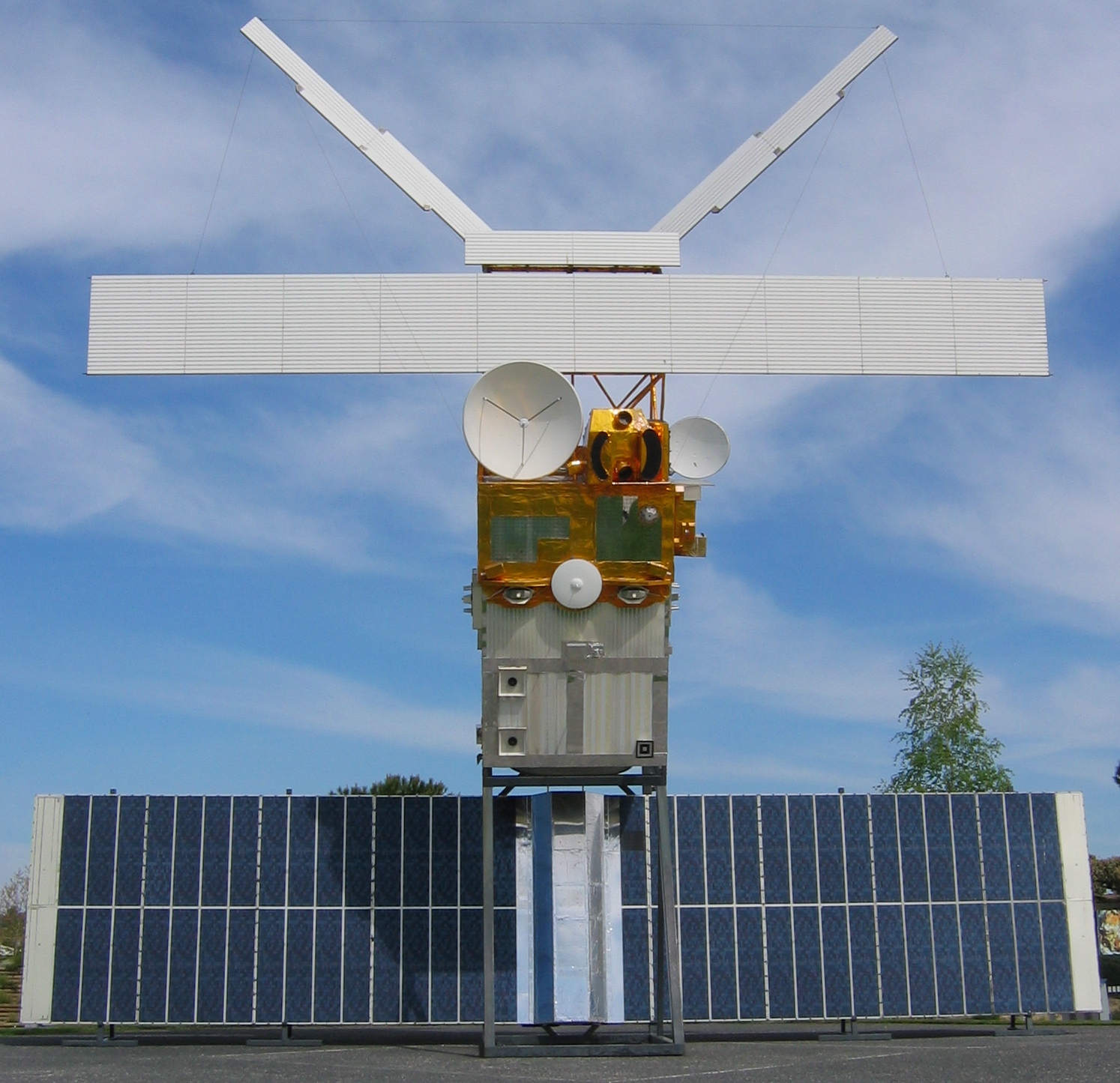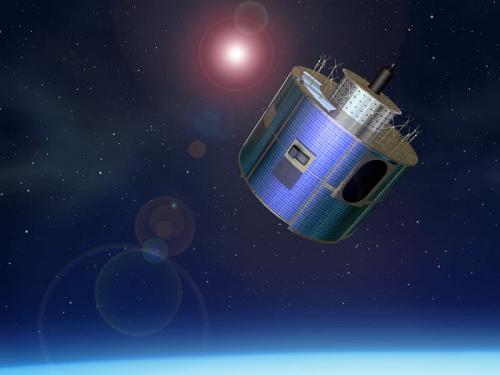|
Johannes Orphal
Johannes Orphal (born 11 July 1966, in Magdeburg) is a German physicist. He is Head of Division 4 "Natural and Built Environment" and Full Professor of Physics at the Karlsruhe Institute of Technology (KIT). From 2009 to 2020 he was Director of the Institute of Meteorology and Climate Research (IMK) at KIT. Until 2009, he was Professor at the University of Paris-Est in Créteil and research scientist at the CNRS. In 2005, Orphal served as Secretary of the Organizing Committee for the Opening Ceremonies of the World Year of Physics at UNESCO headquarters in Paris. His main scientific contributions are in the field of molecular spectroscopy applied to the Earth's atmosphere: laboratory measurements of unstable and reactive molecules and radicals, data evaluation for international databases e.g. HITRAN, preparation and use of remote-sensing satellite missions ( GOME, SCIAMACHY, MIPAS, MetOp, MTG ...) to observe stratospheric chemistry, tropospheric air quality and processes of re ... [...More Info...] [...Related Items...] OR: [Wikipedia] [Google] [Baidu] |
European Remote-Sensing Satellite
European Remote Sensing satellite (ERS) was the European Space Agency's first Earth-observing satellite programme using a polar orbit. It consisted of 2 satellites, ERS-1 and ERS-2. ERS-1 ERS-1 launched 17 July 1991 from Guiana Space Centre aboard an Ariane 4 rocket. The satellite was put into a Sun-synchronous polar orbit at an altitude of 782–785 km. ERS-1 failed on 10 March 2000 after nine years in orbit. Instruments ERS-1 carried an array of Earth-observation instruments that gathered information about the Earth (land, water, ice and atmosphere) using a variety of measurement principles. These included: * RA (Radar Altimeter) is a single frequency nadir-pointing radar altimeter operating in the Ku band. * ATSR-1 ( Along-Track Scanning Radiometer) is a 4 channel infrared radiometer and microwave sounder for measuring temperatures at the sea-surface and the top of clouds. * SAR ( synthetic-aperture radar) operating in C band can detect changes in surface h ... [...More Info...] [...Related Items...] OR: [Wikipedia] [Google] [Baidu] |
Living People
Related categories * :Year of birth missing (living people) / :Year of birth unknown * :Date of birth missing (living people) / :Date of birth unknown * :Place of birth missing (living people) / :Place of birth unknown * :Year of death missing / :Year of death unknown * :Date of death missing / :Date of death unknown * :Place of death missing / :Place of death unknown * :Missing middle or first names See also * :Dead people * :Template:L, which generates this category or death years, and birth year and sort keys. : {{DEFAULTSORT:Living people 21st-century people People by status ... [...More Info...] [...Related Items...] OR: [Wikipedia] [Google] [Baidu] |
1966 Births
Events January * January 1 – In a coup, Colonel Jean-Bédel Bokassa takes over as military ruler of the Central African Republic, ousting President David Dacko. * January 3 – 1966 Upper Voltan coup d'état: President Maurice Yaméogo is deposed by a military coup in the Republic of Upper Volta (modern-day Burkina Faso). * January 10 ** Pakistani–Indian peace negotiations end successfully with the signing of the Tashkent Declaration, a day before the sudden death of Indian prime minister Lal Bahadur Shastri. ** The House of Representatives of the US state of Georgia refuses to allow African-American representative Julian Bond to take his seat, because of his anti-war stance. ** A Commonwealth Prime Ministers' Conference convenes in Lagos, Nigeria, primarily to discuss Rhodesia. * January 12 – United States President Lyndon Johnson states that the United States should stay in South Vietnam until Communist aggression there is ended. * January 15 – 1966 N ... [...More Info...] [...Related Items...] OR: [Wikipedia] [Google] [Baidu] |
Académie Des Sciences
The French Academy of Sciences (French: ''Académie des sciences'') is a learned society, founded in 1666 by Louis XIV at the suggestion of Jean-Baptiste Colbert, to encourage and protect the spirit of French scientific research. It was at the forefront of scientific developments in Europe in the 17th and 18th centuries, and is one of the earliest Academies of Sciences. Currently headed by Patrick Flandrin (President of the Academy), it is one of the five Academies of the Institut de France. History The Academy of Sciences traces its origin to Colbert's plan to create a general academy. He chose a small group of scholars who met on 22 December 1666 in the King's library, near the present-day Bibliothèque Nationals, and thereafter held twice-weekly working meetings there in the two rooms assigned to the group. The first 30 years of the Academy's existence were relatively informal, since no statutes had as yet been laid down for the institution. In contrast to its Briti ... [...More Info...] [...Related Items...] OR: [Wikipedia] [Google] [Baidu] |
Gay-Lussac Humboldt Prize
Joseph Louis Gay-Lussac (, , ; 6 December 1778 – 9 May 1850) was a French chemist and physicist. He is known mostly for his discovery that water is made of two parts hydrogen and one part oxygen (with Alexander von Humboldt), for two laws related to gases, and for his work on alcohol–water mixtures, which led to the degrees Gay-Lussac used to measure alcoholic beverages in many countries. Biography Gay-Lussac was born at Saint-Léonard-de-Noblat in the present-day department of Haute-Vienne. The father of Joseph Louis Gay, Anthony Gay, son of a doctor, was a lawyer and prosecutor and worked as a judge in Noblat Bridge. Father of two sons and three daughters, he owned much of the Lussac village and usually added the name of this hamlet of the Haute-Vienne to his name, following a custom of the Ancien Régime. Towards the year 1803, father and son finally adopted the name Gay-Lussac. During the Revolution, on behalf of the Law of Suspects, his father, former king's attor ... [...More Info...] [...Related Items...] OR: [Wikipedia] [Google] [Baidu] |
IBBCEAS
Incoherent broad band cavity enhanced absorption spectroscopy (IBBCEAS), sometimes called broadband cavity enhanced extinction spectroscopy (IBBCEES), measures the transmission of light intensity through a stable optical cavity consisting of high reflectance mirrors (typically R>99.9%). The technique is realized using incoherent sources of radiation e.g. Xenon arc lamps, LEDs or supercontinuum (SC) lasers, hence the name. Typically in IBBCEAS, the wavelength selection of the transmitted light takes place after the cavity by either wikt:Special:Search/dispersive, dispersive or interferometric means. The light is either directly focused onto the entrance slit of a monochromator and imaged onto a charge-coupled device (CCD) array via a dispersive optical element (e.g. a diffraction grating) or imaged onto the entrance aperture of a conventional interferometer. The spectrum is reconstructed taking the Fourier transform of the recorded interferogram. Similar to other cavity enhanced spec ... [...More Info...] [...Related Items...] OR: [Wikipedia] [Google] [Baidu] |
Meteosat
The Meteosat series of satellites are geostationary meteorological satellites operated by EUMETSAT under the Meteosat Transition Programme (MTP) and the Meteosat Second Generation (MSG) program. The MTP program was established to ensure the operational continuity between the end of the successful Meteosat Operational Programme in 1995 and Meteosat Second Generation (MSG), which came into operation at the start of 2004 using improved satellites. The MSG program will provide service until the MTG (Meteosat Third Generation) program takes over. __TOC__ First generation The first generation of Meteosat satellites, Meteosat-1 to Meteosat-7, provided continuous and reliable meteorological observations from space to a large user community. Meteosat-1 to -7 have all now retired. When operational, the Meteosat First Generation provided images every half-hour in three spectral channels (Visible, Infrared) and Water Vapour, via the Meteosat Visible and Infrared Imager (MVIRI) instr ... [...More Info...] [...Related Items...] OR: [Wikipedia] [Google] [Baidu] |
MetOp
Metop (Meteorological Operational satellite) is a series of three polar-orbiting meteorological satellites developed by the European Space Agency (ESA) and operated by the European Organisation for the Exploitation of Meteorological Satellites (EUMETSAT). The satellites form the space segment component of the overall EUMETSAT Polar System (EPS), which in turn is the European half of the EUMETSAT / NOAA Initial Joint Polar System (IJPS). The satellites carry a payload comprising 11 scientific instruments and two which support Cospas-Sarsat Search and Rescue services. In order to provide data continuity between Metop and NOAA Polar Operational Environmental Satellites (POES), several instruments are carried on both fleets of satellites. Metop-A, launched on 19 October 2006, is Europe's first polar orbiting satellite used for operational meteorology. With respect to its primary mission of providing data for Numerical Weather Prediction, studies have shown that ''Metop-A'' data a ... [...More Info...] [...Related Items...] OR: [Wikipedia] [Google] [Baidu] |
MIPAS
Envisat ("Environmental Satellite") is a large inactive Earth-observing satellite which is still in orbit and now considered space debris. Operated by the European Space Agency (ESA), it was the world's largest civilian Earth observation satellite. It was launched on 1 March 2002 aboard an Ariane 5 from the Guyana Space Centre in Kourou, French Guiana, into a Sun synchronous polar orbit at an altitude of 790 ± 10 km. It orbits the Earth in about 101 minutes, with a repeat cycle of 35 days. After losing contact with the satellite on 8 April 2012, ESA formally announced the end of Envisat's mission on 9 May 2012. Envisat cost 2.3 billion Euro (including 300 million Euro for 5 years of operations) to develop and launch. The mission has been replaced by the Sentinel series of satellites. The first of these, Sentinel 1, has taken over the radar duties of Envisat since its launch in 2014. Mission Envisat was launched as an Earth observation satellite. Its objecti ... [...More Info...] [...Related Items...] OR: [Wikipedia] [Google] [Baidu] |
SCIAMACHY
SCIAMACHY (SCanning Imaging Absorption SpectroMeter for Atmospheric CHartographY; Greek: σκιάμάχη: analogously: "Fighting shadows") was one of ten instruments aboard of ESA's ENVIronmental SATellite, ENVISAT. It was a satellite spectrometer designed to measure sunlight, transmitted, reflected and scattered by the earth's atmosphere or surface in the ultraviolet, visible and near infrared wavelength region (240 nm - 2380 nm) at moderate spectral resolution (0.2 nm - 1.5 nm). SCIAMACHY was built by Netherlands and Germany at TNO/TPD, SRON and Dutch Space. Launch and termination SCIAMACHY, aboard the ENVISAT satellite, was launched by ESA (European Space Agency) from Kourou, French Guiana, in March 2002. ENVISAT's mission was ended in May 2012, after loss of contact one month earlier. Operation The absorption, reflection and scattering characteristics of the atmosphere were determined by measuring the extraterrestrial solar irradiance and the upwellin ... [...More Info...] [...Related Items...] OR: [Wikipedia] [Google] [Baidu] |






